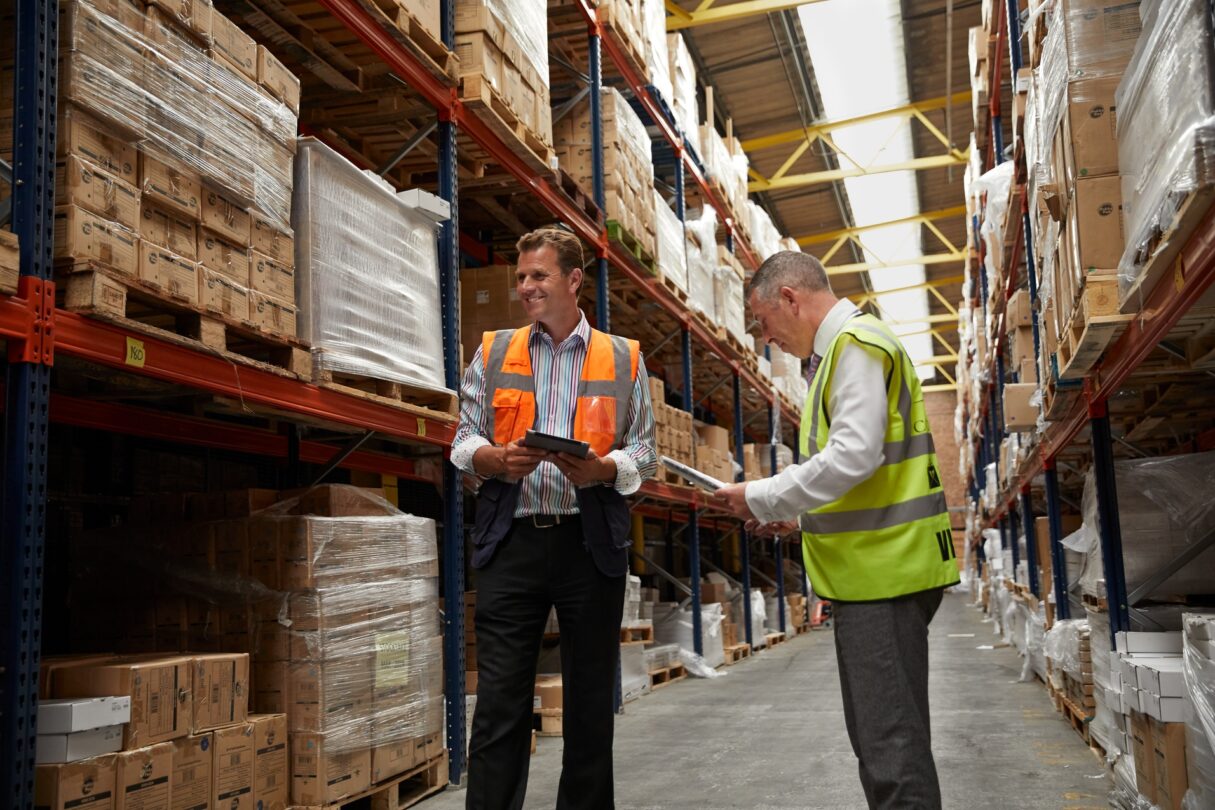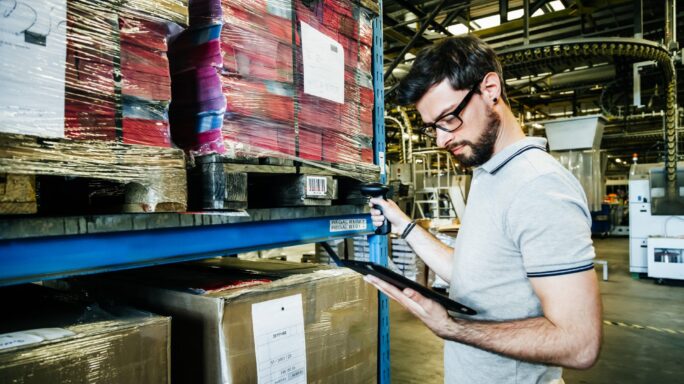Money Matters
Deferred and simplified customs declarations: What businesses need to do
Deferred Declarations and Simplified Declarations are a requirement when importing post-Brexit. Here's how to register for and implement them.

The Brexit transition period ends on 31 December 2020. From 1 January 2021, the UK will have a customs border with EU countries, with full customs controls.
This means import and export declarations will be required for a business task that was formerly comparatively straightforward, such as bringing goods into the UK from France or Germany. Customs and excise duty might be payable, as well as VAT.
To allow for a period of adjustment, between 1 January 2021 and 30 June 2021, the UK government is staggering the introduction of import requirements for businesses in England, Scotland and Wales as part of the new Border Operating Model.
In particular, and until 30 June 2021, importers in England, Wales and Scotland can optionally defer customs declarations and payments. The declaration and payment can be deferred for up to six months after the import date.
This is known as Deferred Declarations.
To make use of it, businesses in England, Wales and Scotland must use the Simplified Customs Declaration process.
This is also known as the Customs Freight Simplified Procedure (CFSP), but here we use the same terminology as HMRC is using for post-Brexit customs operations.
Note that previously announced government schemes for customs following Brexit, such as the Transitional Simplified Procedures, have been withdrawn and cannot be used.
This article covers what you need to know about deferred and simplified customs declarations, and covers the following topics:
What are Deferred Declarations and Simplified Customs Declarations?
Registering for Simplified Customs Declarations
Which Simplified Customs Declaration scheme to use
How to use the EIDR process to defer customs declarations
How to use SDP to simplify import customs requirements
What happens when the six-month customs deferment period ends?
What are Deferred Declarations and Simplified Customs Declarations?
There are two options when using the Simplified Customs Declaration process.
- Entry in Declarant’s Records (EIDR):
Also known as making imports without authorisation in advance, EIDR means you can bypass the full or simplified customs requirement for standard goods by making an import declaration in your own commercial records. - Simplified Declaration Procedure (SDP): This has the advantage that it can be used for some controlled goods, as well as standard goods. However, while it brings additional customs requirements, it’s still significantly simpler compared to making full customs declarations.
The government provides guidance on what is considered controlled goods.
Regardless of which of the two options your business uses, you must make a supplementary declaration after the date of import.
Between 1 January 2021 to 30 June 2021, this can be deferred for six months, along with paying any customs duty at that time (a duty deferment account is required for this).
However, from 1 July 2021, the supplementary declaration must be submitted by the fourth working day of the following month if you’re using EIDR or SDP.
Although open to businesses in England, Wales and Scotland, the Simplified Customs Declaration scheme has some barriers to entry that might mean HMRC denies you authorisation to use them.
You’ll need to have a good record with tax, customs and excise compliance to be able to apply for obligatory procedures that form part of the processes (although new businesses are effectively automatically accepted, assuming there’s no link to non-compliant businesses).
The goods must have been in free circulation in the European Union (EU) prior to import too.
The government doesn’t recommend businesses handle customs themselves because it’s complicated, and requires special software. It anticipates most businesses will use a customs intermediary, such as a customs broker.
Any you appoint to act indirectly for you can still make use of the two processes provided they’re authorised for them.
Brexit: The UK transition
Need help making changes to your business processes now that a UK-EU trade deal is in place? We're here and ready to support you to make them.

Registering for Simplified Customs Declarations
To be able to use either EIDR or SDP as of 1 January 2021 for EU imports, you’ll need to prepare in advance, as follows:
1. EORI number
You will need an Economic Operators Registration and Identification (EORI) number that begins with GB.
The government issued these automatically in 2019, but if you haven’t got one then you can apply online.
2. Create a Duty Deferment Account
Since using Simplified Customs Declarations means you don’t pay customs duties immediately upon import, you or the customs intermediary you use will need to have a Duty Deferment Account (DDA). This provides you with a deferment account number (DAN).
You pay any duties owed via a monthly direct debit. Duties are charged by HMRC when they receive your supplementary declarations (see later).
Ideally, and assuming you aren’t using an intermediary, you should have a duty deferment account set up for your business before 1 January 2021, but it’s definitely required before you make your first supplementary declaration.
You can apply for a DDA at the UK government website.
You need a DDA in place even if you know the goods you’ll import won’t attract customs duty. Note that an earlier requirement for a Customs Comprehensive Guarantee has been eased, which should allow more businesses to use DDAs.
3. Register for the Simplified Customs Declaration scheme
As mentioned, both EIDR and SDP are part of the Simplified Customs Declaration scheme, and businesses hoping to use either must be authorised by HMRC beforehand unless they’re using an intermediary who has authorisation.
You apply by completing form C&E48, and posting it to HMRC. This can’t be done online. HMRC will then write to you to inform you if you’ve been authorised.
4. Software
You’ll need customs software compatible with the government’s CHIEF system (and ideally the newer Customs Declaration Service (CDS) too) in order to make the above-mentioned supplementary declarations, among other things.
This will require you get a CHIEF badge for your business.
And, of course, you’ll need to ensure your staff are trained in how to use the software. Again, if you use a customs intermediary, there won’t be a need for you to use this software directly.
5. Postponed VAT
The two processes mean VAT-registered businesses have to use the Postponed VAT scheme too. See our blog on postponed VAT accounting for more information, with special reference to new rules as of 1 January 2021 about imports of £135 and less.
Which Simplified Customs Declaration scheme to use
The two Simplified Customs Declaration processes are similar, but the key differences are as follows:
- EIDR can only be used for standard goods, as explained earlier. SDP can be used to import some controlled goods (see the government’s guidance).
- SDP means you must submit a Simplified Frontier Declaration prior to each import. This is a kind of customs declaration with a significantly reduced requirement to provide details compared to a full declaration. In contrast, EIDR lets you simply make a note of the import customs details as part of your own commercial records, with no need to provide HMRC with information up-front.
For both schemes, HMRC expects you’ll operate professionally, in that you’ll identify and report errors, for example, and have any required procedures in place.
Once authorised, you also need to be prepared to let HMRC staff audit your systems when they choose. This involves ensuring they have access to an office, car parking, and even ensuring there’s bathroom facilities.
There are additional requirements for EIDR. You’ll need to keep all declarations you make in your commercial records for four or more years after their submission date.
You’ll need to show you can keep an audit trail, and that your business records are secure (e.g. you backup on a regular basis). You need to be very competent using the CHIEF software.
How to use the EIDR process to defer customs declarations
Let’s take a high-level look at how a typical import will work if you use EIDR to defer customs declarations and make use of the six-month deferment period.
We look at using SDP later.
Note that we assume for both instructions that, before arranging the import, you’re aware of any kind of import licence you might need, that you understand your VAT responsibilities and that you’re aware of what tariffs might apply.
- Before moving the goods, enter the information into your own commercial records. The government provides a list of what information you should record, but key information includes a unique consignment reference, the commodity code, the customs procedure code, customs value, quantity, purchase/sales invoice numbers, and a written description of the goods.
- Once the goods arrive, add the date and time to the records you created in the first step.
- Within six months of the date above, submit a supplementary declaration for the import via your CHIEF-compatible software.
- Upon receipt of the supplementary declaration by HMRC, your duty deferment account will be debited with the customs duty (if any), plus any excise duty. At the same time, HMRC will update its VAT records to reflect that the goods have cleared customs and this will show up in your next monthly postponed VAT report.
- You may need to complete an Intrastat Supplementary Declaration.
- Keep the entries you make in your commercial records relating to the import for at least four years. In order not to accidentally lose them, you might need to initiate some kind of backup procedure if the records are kept digitally, or use warehousing to ensure paper records are stored securely.
How to use SDP to simplify import customs requirements
Here’s how to use the SDP and make use of the six-month deferment period.
- Prior to dispatch of the goods, complete a simplified frontier declaration using your CHIEF-compatible software. Ensure that the exporter has completed their paperwork too, including providing their EU-issued EORI number and completing an export declaration.
- Within six months of the date above, submit a supplementary declaration for the import via your CHIEF-compatible software.
- Upon receipt of the supplementary declaration by HMRC, your duty deferment account will be debited with the customs duty (if any), and any excise duty. At the same time, HMRC will update its VAT records to reflect that the goods have cleared customs and this will show up in your next monthly postponed VAT report.
- You may need to complete an Intrastat Supplementary Declaration.
What happens when the six-month customs deferment period ends?
As of 1 July 2021, and assuming you’re authorised for them, you can continue to use either EIDR or SDP as described above.
Alternatively, you can start making full customs declarations at the point of import.
However, for imports on 1 July 2021 or later, the ability to defer declarations and also customs duty for six months is no longer possible.
Final thoughts
While the methods described above certainly simplify customs requirements when importing, they bring with them an initial requirement to learn and understand new ways of working.
For many businesses, dealing with customs even in this simplified way will be entirely new, and therefore preparations should start immediately to see where the weak points of implementing Deferred Declarations or Simplified Declaration processes lie.
Business after Brexit
Need help doing business post-Brexit? Get this free guide and discover what you need to know and do now.







Hi
Will sage offer software to carry out Chief badge online submissions?
Will it be a free upgrade of Sage accounts?
Cheers
can you help please I currently import goods from Italy , my suppliers organizes all the transportation / delivery to me themselves , I have no input into this side of the transaction other than paying the shipping amount on the invoice … What system do I need to use , I already have an Eori number as I have been importing from the EU, USA , Canada and the far east for the last 10 years . with no problem till now
Many thanks for taking time to read this
Mark